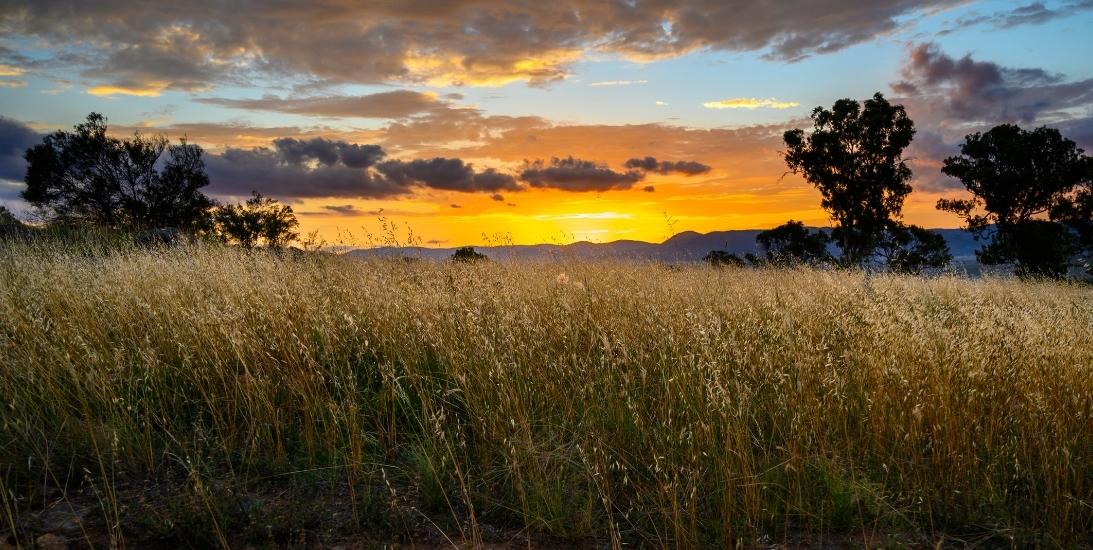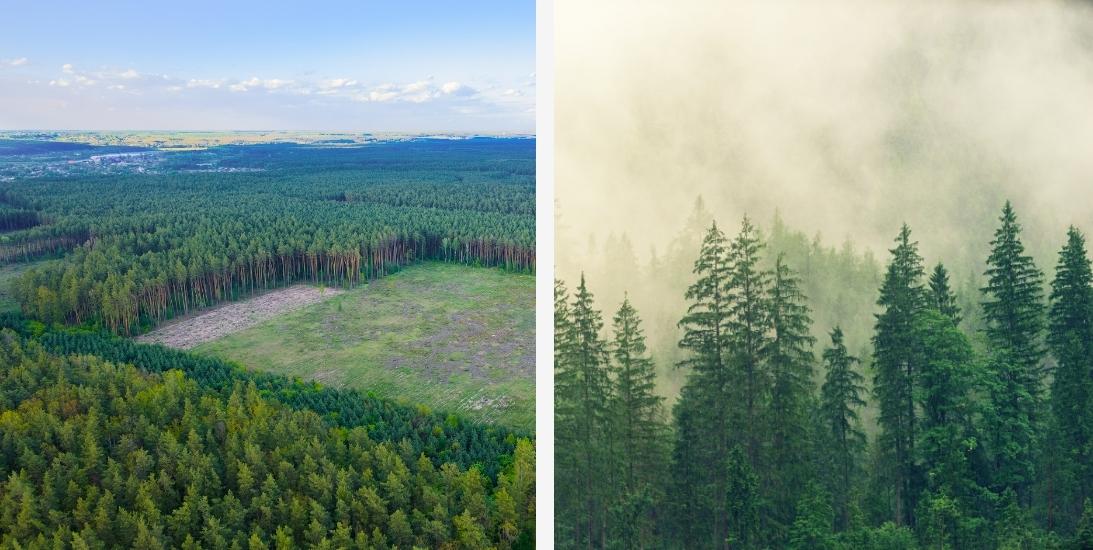Why We Need to Talk About Biodiversity and Packaging
Posted By on Apr 27th 2022
Why We Need to Talk about Biodiversity and Packaging
This week, we’re continuing the spirit of 2022’s Earth Month theme - Invest in Our Planet.
If you’re anything like me, you’ve seen your fair share of nature documentaries, docuseries, and the general programming of Animal Planet. You may have a deep and intrinsic love for the wild creatures we share our home planet with - especially the spectacular species that also find themselves on endangered species lists across the globe. You may feel awe and appreciation for them and an equally significant pang of sadness and grief and the prospect of their extinction from the planet, coupled with a crippling sense of powerlessness.
Or maybe not. And that’s fine too!
But if so, let’s talk about how your packaging choices can have an immediate, positive impact on these plant and animal species - by leaving them untouched.
Supply Side Impact
Generally speaking, the most significant impact of packaging typically comes from its source input materials.
For that reason, we choose to focus intently on using existing materials (recycled content) to produce packaging instead of virgin content, which is produced or grown specifically to make a packaging polymer or fiber.
We apply this concept to plastics, biopolymers, papers, fibers, and multilayer packaging materials. A “virgin” material is not limited to just tree fiber for paper or petroleum-based new plastics. We consider a “virgin” input to be an input material that is newly created (or made from scratch) to create a product. The opposite would be a reclaimed, recycled, or upcycled material - which is already in existence and can be repurposed into a feedstock.
We believe this virgin input concept should be applied with equal scrutiny to the source inputs for bio-based polymers, bioplastics, and renewable fibers - typically crop like corn, sugarcane, beets, hemp, cotton, bamboo, and wood. When allocated for polymer production, these crops are grown to produce packaging materials (this is also called an “on purpose crop.”
What Does This Have to do With Endangered Species?
Plant-based packaging can seem like the best alternative to the detrimental impact of petroleum-based packaging, which relies on oil and gas for supply and leads to marine and environmental pollution.
While plant-based packaging has its benefits and use cases in several applications (we cover this in our Bioplastics Review), we must also recognize that these bio-based input materials rely entirely on an equally precious resource - land.
Industrial Agriculture, Habitat Loss, and Endangered Species
These input crops require extensive swathes of land to be grown year after year. Industrial agricultural practices like extensive fertilization, pesticide application, and monoculture are often needed to ensure their growth and success. These are all detrimental to soil health and the ecosystems and animals surrounding them. These practices are typical and often a no-brainer for harvesters who need to keep the production of crops to a minimum level to meet demand. More and more land must be allocated as cropland for crops whose demand is growing.
Often, this new cropland comes from the conversion of natural habitats, forests, or otherwise untouched (non-commercial) lands. These lands border on ancient and endangered forests, rainforests, and habitats in many cases.
The number one threat to animals worldwide is habitat destruction. Where plants and animals don’t have the space to live, grow, and breed, their numbers plummet drastically and - sometimes - irreversibly.
Endangered species often reside in our world’s ancient and endangered forests. The closer we creep and limit these lands, the faster we are depleting their ability to survive, thrive, and recover in numbers.
The above is taken from the Forest Mapper Application - an incredible tool maintained and published by Canopy. In yellow are biodiversity hotspots, and in green are ancient and endangered forests. Notice how they intersect and interact.
Use the free Forest Mapper tool to
- Find where the world’s ancient and endangered forests are.
- See the remaining natural habitats of tigers, orangutans, elephants, rhinos, and other endangered species.
- Around the globe, see tree cover, watershed boundaries, forest carbon density, tree cover (and more.)
- Most importantly: Check the forest locations against where your product or packaging materials’ source inputs are grown.
|
|
|
|
|
|
|
|
|
|
|
Corn is cultivated extensively and industrially in North America, notably in the Midwest of the United States. The habitats that are converted to cropland are often great plains, prairies, and grasslands. Grasslands hold incredible amounts of carbon in their massive root and soil systems and have disappeared rapidly as cities, farmland, grazing land, and suburbs expand. Healthy soil absorbs and holds carbon for long periods. (EcoEnclose has chosen to support a local Colorado carbon offset project - the protection of the May Ranch Grassland) At 14,500 acres, if the May Ranch land was converted from its natural prairie form, it would release 8,000 metric tons of carbon per year for the next 50 years. That’s the equivalent of adding 50,000 cars to roads each year!

Sugarcane grows best in tropical and subtropical environments, and much of its growth for biopolymer production is based in South America, specifically Brazil. In the summer of 2020, over 90,000 fires were recorded via satellite in the Amazon rainforest. Most of these fires were to clear land for pasture and agriculture. Since then, the Brazilian government of Jair Bolsonaro has added another piston to the engine of deforestation by allowing the expansion of sugarcane into protected areas in the country. The rainforests and grasslands are already experiencing immense pressure from food demand - if sugarcane production expands into carbon-sequestering lands, it could have a majorly negative impact on the environment.

Many people promote bamboo as “tree-free” paper. However, the reality is much more complicated. Bamboo is grass and is fast growing. However, bamboo is also a primary food source for pandas. Industrial bamboo production is often accomplished by clearing ancient and endangered forests, which dramatically reduces the biodiversity, stability, and health of the land.

Many brands move away from plastic in their supply chain and product packaging. While this is awesome for marine and environmental plastic pollution and curbing reliance on virgin petroleum, it typically also means that the bulk of this packaging is then replaced with paper. Paper is an excellent material and alternative, but brands can unintentionally substitute one environmental harm for another: the use of trees to make their (often single-use) packaging.
Managed forests for paper production also threaten endangered species and forests. Using a certification scheme such as FSC® is a great start, but be sure to confirm that the forests of origin are also free of any ancient or endangered forest fiber. Certification does not inherently ensure the managed forests are not within or bordering on these habitats.

Perform a Basic Biodiversity Audit for Your Packaging
Get a good (or better) idea of how the virgin inputs used in your product or shipping packaging may be impacting global biodiversity hotspots by following the following checklist.
- Determine which aspects of your packaging (or products) are virgin inputs or rely on virgin inputs.
- Learn the “forest of origin” for virgin paper fibers and the crop origin location for input fibers or polymers ( fibrous packaging, bio-based polymers, renewable source materials.) This step will likely be the most time-intensive.
Work with your packaging supplier(s) to source documentation on the source input materials used in your packaging. This can typically be in an MSDS, a letter from your packaging converter and their paper mill, a certification letter from a manufacturer, etc. It’s unlikely that these documents will typically include the location of the crops/forests, but push to discover this from your supply chain.
- When you can determine the growth location, place it on a map compared to the ForestMapper Application.
- Check to see whether the location(s) overlap with or border on any: ancient/endangered forests, rainforests, areas with high concentrations of biodiversity, or populations of listed endangered species.
If you’re unable to find the growth location, or your supply chain partners are unwilling to disclose it or evade these questions: keep asking, keep pushing, and communicate your goal(s) of staying away from areas of high biodiversity. Referencing your own internal company goals for biodiversity is also helpful in leveraging tools in these conversations.
If you’re being ghosted, it may be worth exploring new suppliers or partners who can offer this level of transparency in the supply chain. Alternatively, you can also continue working with your existing suppliers towards higher transparency and insight into the production. We find that these progress over perfection approaches can lead to long-term value adds for both you and your suppliers and vendors, assuming you are both committed and invested in improving on agreed-upon metrics.
Sourcing Paper Safely - Away From Ancient and Endangered Forests and Habitats
In our latest mini blog post, Sourcing the Most Sustainable Paper, we covered the importance of vetting source materials for paper-based packaging.
Check it out to learn:
- Our Hierarchy of Sustainable Paper Inputs
- How to avoid using ancient and endangered forest fiber
- Easy switches for recycled paper alternatives in paper packaging
- Where to find recycled and ancient-forest friendly paper and packaging
When you need virgin fiber, FSC® certified is not enough. An FSC® certified virgin (0% recycled) board does not always guarantee it is not sourced from areas within or nearby ancient or endangered forests - the home of most of the world’s endangered species.
It is critical to learn the forest of origin for all virgin paper used in your products and supply chain.
Biodiversity Goals and Recycled Content Goals go Hand in Hand
The best way to achieve your biodiversity goals? Use recycled content in your packaging. Using an existing material as a source input lets you sleep well at night knowing that your packaging isn’t contributing to deforestation and species extinction.
Use recycled content (post-consumer waste as the #1 priority input) for your packaging to make immediate progress toward CSR and ESG targets like
- Recycled Content / Materials Circularity
- Biodiversity & Forest Protection
- Ancient and Endangered Forest - free packaging
- Carbon Reduction
Here at EcoEnclose, we understand jumping into the world of eco-friendly packaging can be a daunting task. Let us be your partner in determining the best sustainable packaging solutions for your business. Contact us today to get started.
hello@ecoenclose.com | 888-445-6575





